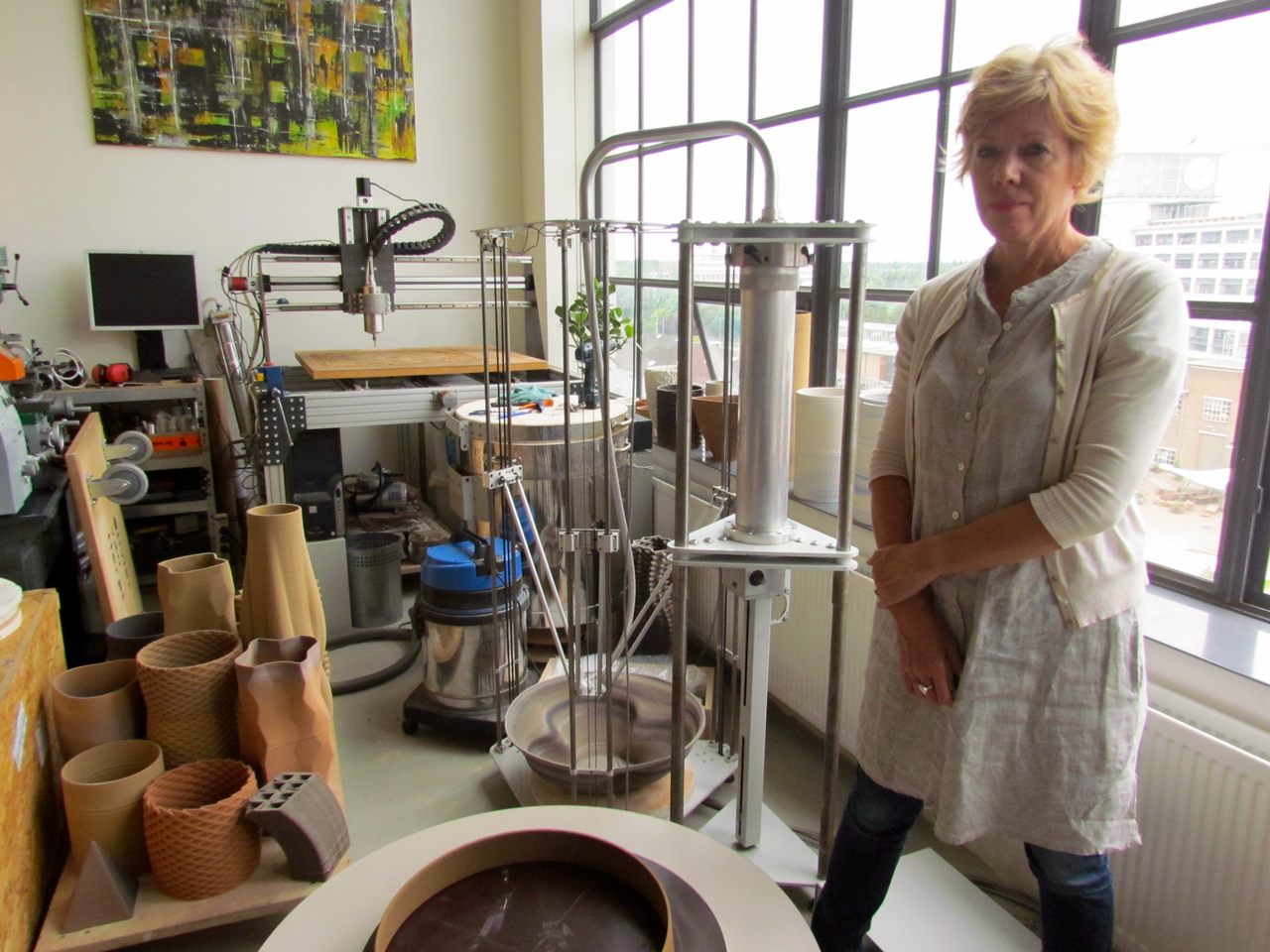
Yesterday I wrote about Olivier van Herpt’s amazing ceramic 3D printer, but I’ve been wondering what the implications of such a machine could be. They are huge.
As stated in the previous story, all ceramic 3D printers currently use the “wet clay pushed by compressed air” method, which results in a very limited set of possible print geometries, due to the wet clay slumping.
van Herpt’s new approach gets around this limitation by 3D printing regular “hard clay” directly using an innovative technique. While the details of how that’s done are in the other story, today I wanted to think about what this means in a bit more depth.
van Herpt’s prototypes are almost all vases of one kind or another, and they are fabulously designed and printed. But ceramics are used for far more than just containers, as has been done for millennia.
Today we find ceramics used in a wide variety of industrial applications, including:
- Construction: building materials, tiles, decorations
- Electronics: insulators, capacitors, resistors, motors, piezoelectrics
- Plumbing: piping, appliances, heating, cooling
- Fabrication: moulding, casting
- Transportation: deep-sea submersibles, specialty components
- Tooling: hazardous environment components
- Containers: corrosives, durable, long term
- Household: plating, storage, food preparation
- And much, much more
Ceramics offer a combination of material properties that few other 3D print materials can match: heat resistance, rigidity, chemical resistance and durability. Just as these properties are valued in industry today by using ceramic objects, they can also be leveraged with 3D printed ceramic objects.
But they can be exploited in new ways never seen before, just as 3D printed plastics and metals have created unique possibilities in a number of industries.
From what I saw of van Herpt’s printer design, it can certainly be scaled up to potentially massive size, enabling all manner of interesting ceramic prints. It’s also possible it could be scaled down, too, for smaller objects of industry interest.
Consider the aerospace revolution taking place where new kinds of parts are made that are lighter and stronger than could be made before. This is done by ingenious 3D designs that can only be produced on 3D printing equipment.
What if this approach was also used in ceramic applications? What would be possible? Could we, for example, 3D print ceramic building structures of organic design that would use less material but offer greater strength? Could we design new types of capacitors that store more energy? What style of plumbing could be possible with unlimited 3D design?
I think the same revolution could take place with ceramics using 3D printing equipment such as designed by van Herpt. Today the current craze is all about 3D printed metal objects, but perhaps in a few years ceramics could be the focus.
What direction will van Herpt take this technology?

